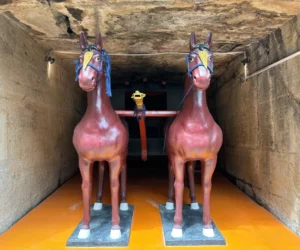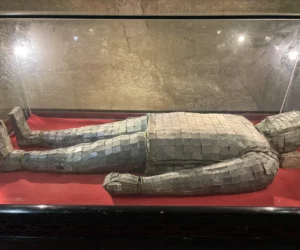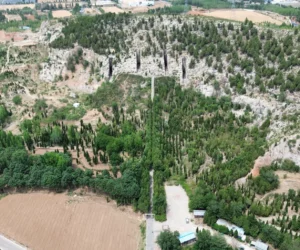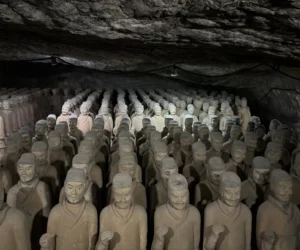Exploring the Tomb of King Xiao of Liang State The Tomb of King Xiao of Liang, belonging to Liu Wu, is a grand historical site located in the south peak of Baoan. Liu Wu, a significant figure in the Han Dynasty, was closely related to the founding emperor, Liu Bang. His tomb, facing east, spans…
Western Han Dynasty
The Western Han Dynasty, spanning from 206 BC to AD 9, marked a golden age in Chinese history, succeeding the turmoil of the Qin Dynasty’s fall. This era was characterized by significant expansion, cultural flourishing, and the establishment of patterns that would define imperial China for centuries. The dynasty was founded by Liu Bang, who emerged victorious in the power struggle following the collapse of the Qin Dynasty, proclaiming himself Emperor Gaozu of Han.
Under the Western Han, China saw a period of relative peace and prosperity, with emperors like Wu Di (reigned 141–87 BC) playing pivotal roles in its expansion and consolidation. The empire extended its borders through military campaigns, pushing into Korea, Vietnam, and Central Asia, thus securing the Silk Road’s trade routes. These conquests not only enlarged the empire’s territory but also facilitated cultural exchanges and the spread of Buddhism into China.
The Han Dynasty is notable for its administrative sophistication. The government was structured around a central bureaucracy, drawing on Confucian principles to guide its ethics and practices. This period saw the civil service examination’s inception, a revolutionary method to select government officials based on merit rather than birthright, although it became more systematically used in later dynasties.
Social and daily life in the Western Han Dynasty was marked by significant advancements. Agriculture flourished with the promotion of iron tools and the introduction of new crops, supporting a growing population. Silk production and the arts thrived, with the era producing enduring literary and historical works, including Sima Qian’s “Records of the Grand Historian.”
Religion during the Western Han was a complex tapestry that included ancestor worship, Confucianism, Taoism, and the introduction of Buddhism towards the dynasty’s end. These beliefs coexisted and influenced each other, shaping the spiritual and moral outlook of the people.
The dynasty’s decline began with internal strife and corruption within the imperial court. The usurpation by Wang Mang in AD 9, who established the short-lived Xin Dynasty, temporarily interrupted the Han lineage. However, the Eastern Han Dynasty would later restore Han rule, continuing its legacy until AD 220.
Wars and battles were pivotal in the Western Han’s expansion and defense. The Han–Xiongnu War, for instance, was a series of military engagements over several decades that ended with the Han Dynasty’s decisive victory, securing the northern borders and ensuring the safety of the Silk Road trade routes.
The Western Han Dynasty’s legacy is profound, laying the foundations for much of Chinese culture, government, and society. Its influence extends far beyond its historical period, resonating through subsequent dynasties and into modern China.

Tomb of Queen of King Xiao of Liang State
Unveiling the Grandeur of the Tomb of the Queen of King Xiao of Liang State The Tomb of the Queen of King Xiao of Liang State, discovered in 1991, stands as a monumental testament to ancient Chinese burial practices and the societal importance of the Han Dynasty’s elite. Located just 200 meters from King Xiao’s…

Tomb of King Gong of Liang State
Unveiling the Majesty: The Tomb of King Gong of Liang State The Tomb of King Gong of Liang State, identified as belonging to Liu Mai, stands as a monumental relic of the Western Han Dynasty. Archaeologists pinpointed its location at Lishantou, near Mount Baoan. The discovery in 1986 and subsequent excavation in 1991 revealed a…

Jiulong Cliff Tombs
The Jiulong Mountain Cliff Tombs, situated in the Shandong Province of China, represent a significant archaeological and historical site. These tombs, numbering over 2,000, are distributed along the cliffs and span various dynasties, including the Western and Eastern Han Dynasties, Wei, Jin, Southern and Northern Dynasties, with notable mention of a memorial tomb from the sixth year of Yonghe (AD 350).

